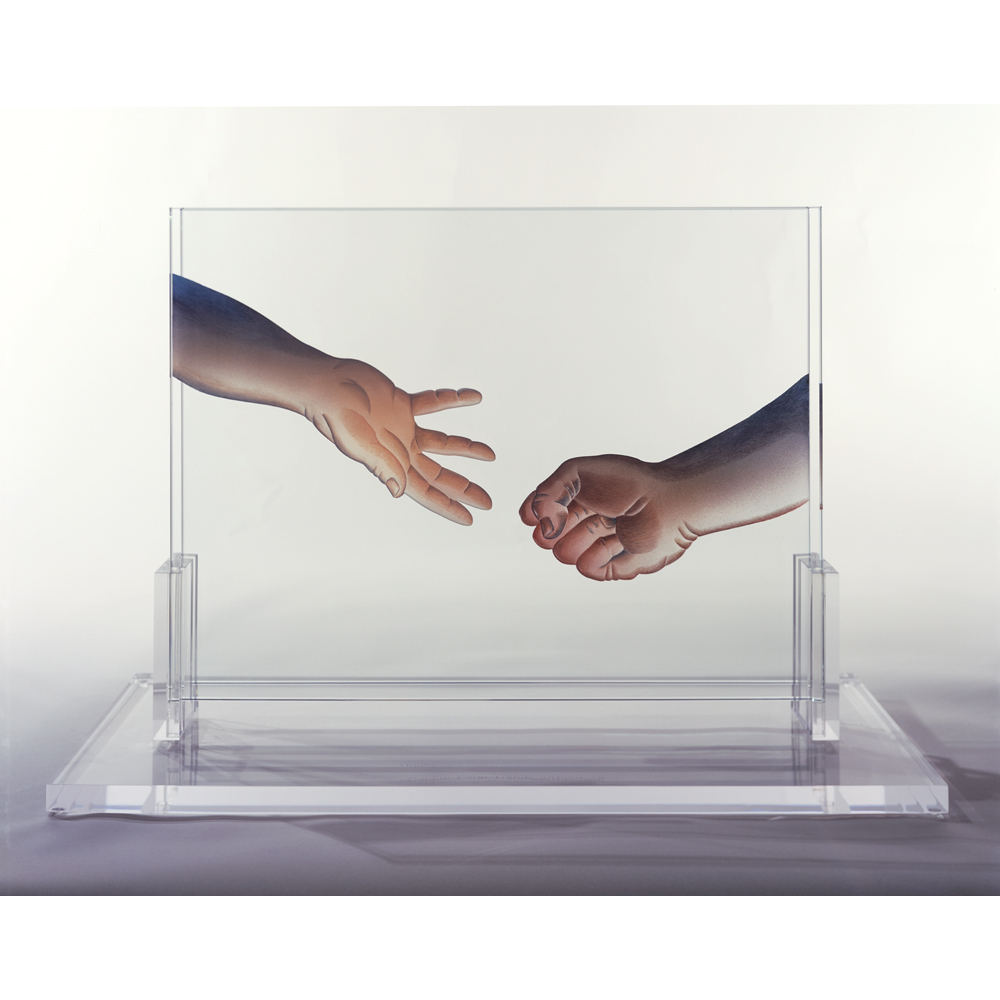Artwork Description
Judy Chicago – Double Clear Handout/Handsoff
Dimensions: 20 x 30 x 12″ with acrylic stand finished size / 18 x 24 x .5″ per panel
Year: 2006
Medium: etching and glass paint on clear glass, 2 panels
Judy Chicago’s Handout/Handsoff presents a powerful social message. The tension between help and its transactional expectation is clear. One hand reaches out to provide assistance, it seems, while the other hand is a closed fist. It’s as if assistance always comes with a price. In many instances, assistance is provided to women with the expectation of some sort of sexual repayment. This work was created in 2006, several years before the onset of the popular Me Too movement. Judy Chicago’s messaging has always been ahead of its time, and in this case, the message contained in Handout/Handsoff is even more powerful today than it was in 2006, because society is finally able to comprehend the profound meaning and symbolism in Judy Chicago’s work.
-Tonya Turner Carroll
Judy Chicago first worked in glass during the Holocaust Project, which was introduced and concluded by stained glass installations. In 2003, she was an Artist in Residence at the famed Pilchuck Glass School outside of Seattle, established by renowned glass artist, Dale Chilhuly. Previous to this residency, she had worked on and off with several glass etchers and by the time she visited Pilchuck, she had also become intrigued with glass casting.
Since that time, she has worked in and combined different techniques, including cast glass, fused glass, etching, kiln fired painting, gold, silver and palladium leafing, gilding and copper plating as well as bronze and a combination of glass and bronze.
Chicago’s glass work utilizes technical proficiency while creating symbols that operate on more than one level. Each object packs a punch. In the hand series, the physical reality of flesh and bone is laid out in biological detail.
The Toby Heads series convey a sense of dignity while also exploring issues of vulnerability, mortality and the power of the human spirit. These images function as both a physical and emotional source for expression. Chicago’s choice of glass and its translucency offers the possibility of revealing what lies just beneath the surface, providing viewers with the key to understanding the function of human physiology in physical and emotive terms.
Chicago’s series Heads Up engages with universal emotions. As Dr. Kathy Battista writes, “What lies beneath the surface of the person, and that intangible uniqueness of each being which cannot be seen, is what Chicago explores here. Glass is the ideal medium for such investigation: its transparent nature allows the viewer to reach beyond the superficial and to get inside the structure.”

